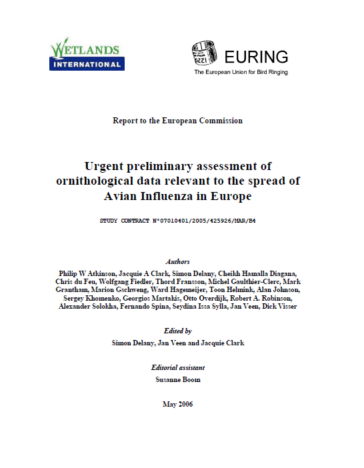
Urgent preliminary assessment of ornithological data relevant to the spread of Avian Influenza in Europe (Phase 1)
-
Species
In the course of 2005 the highly pathogenic Avian Influenza Asian lineage HPAI H5N1 virus spread from Southeast Asia to SW Siberia, Kazakhstan and the Southern Urals. Migratory birds were suspected of playing a role in the spread of the disease. This meant that the EU could be under direct threat as a number of waterbirds (geese, ducks and shorebirds in particular) were known to migrate through the infected areas to the EU in the northern winter. The European Commission (DG Environment) therefore asked Wetlands International and EURING to undertake the present study.
The aims of the project were:
(1) to identify species which pose a relatively high risk of spreading H5N1 along their migration routes to the European Union.
(2) to analyse the migration routes of these so called Higher Risk Species on the basis of recoveries of ringed birds.
(3) to identify wetland sites where Higher Risk Species concentrate in large numbers during migration and in the northern wintering range and (4) to develop and test a format for the rapid assessment of ornithological data at the level of wetland sites, in order to prepare wetland managers for an outbreak of H5N1.
Citation: Delany, S., J. Veen & J. Clark, Eds. 2006. Urgent preliminary assessment of ornithological data relevant to the spread of Avian Influenza in Europe. EU-DG Environment, Brussels. http://ec.europa.eu/environment/
nature/nature_conservation/focus_wild_birds/avian_influenza/pdf/avian_influenza_report.pdf

